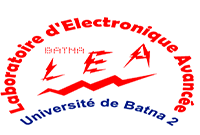In the last few years, an accelerated trend towards the miniaturization of nanoscale circuits has been recorded. In this context, the Tunneling Field-Effect Transistors (TFETs) are gaining attention because of their good subthreshold characteristics, high scalability and low leakage current. However, they suffer from low values of the ON-state current and severe ambipolar transport mechanism. The aim of this work is to investigate the performance of SiGe nanoscale Double Gate TFET device including low doped drain region. The electrical performance of the considered device is investigated numerically using ATLAS 2D simulator, where both scaling and reliability aspects of the proposed design are reported. In this context, we address the impact of the channel length, traps density and drain doping parameters on the variation of some figures of merit of the device namely the swing factor and the ION/IOFF ratio. The obtained results indicate the superior immunity of the proposed design against traps induced degradation in comparison to the conventional TFET structure. Therefore, this work can offer more insights regarding the benefit of adopting channel materials and drain doping engineering techniques for future reliable low-power nanoscale electronic applications.
In this paper, Ni/NiO/Ni multilayers are deposited on glass substrates using radio frequency magnetron sputtering, where the structural and morphological properties are analyzed using X-ray diffraction besides scanning electron microscopy techniques. The associated magnetic hysteresis loops are obtained by vibrating sample magnetometer for temperatures ranging from − 100 to 300 °C. Hence, the parameters α, β, Bmax, HC, and Br defining a hysteresis loop are determined at each temperature using Preisach model for the first two parameters, while the remaining ones are deduced experimentally. The set of these parameters are introduced within the training data set in the context of an ANFIS-based approach to predict the hysteresis loop of a Ni/NiO/Ni multilayer for any temperature below the Curie temperature. The comparison conducted between theoretical and experimental results showed a good agreement. This work provided more insights regarding the consolidation of experimental characterization with the development of soft computing-based frameworks.
